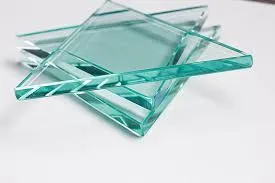Architectural Laminated Glass A Blend of Functionality and Aesthetics
Architectural laminated glass is a remarkable advancement in the field of construction and design, combining safety, aesthetics, and innovative functionality. This engineered glass product consists of two or more layers of glass, bonded together with a polymer interlayer. This not only enhances the structural integrity of the glass but also provides numerous benefits that make it a preferred choice in modern architecture.
One of the primary advantages of architectural laminated glass is its safety features. The lamination process ensures that if the glass is shattered, the fragments do not fall apart but adhere to the interlayer, significantly reducing the risk of injury. This is especially important in high-rise buildings, schools, and public spaces where safety is a paramount concern. The glass remains intact, keeping the environment secure and maintaining the overall aesthetic appeal of the structure.
Moreover, architectural laminated glass provides excellent sound insulation properties. The interlayer used in the lamination process can effectively dampen sound transmission, making it an ideal choice for buildings situated in noisy urban environments. This feature not only enhances the comfort of occupants but also contributes to a more serene living or working atmosphere.
Another significant benefit of architectural laminated glass is its energy efficiency. Many modern laminates are designed to reflect infrared heat and reduce ultraviolet rays, helping to maintain comfortable indoor temperatures while minimizing energy consumption. This can lead to reduced heating and cooling costs, making it an environmentally friendly choice that supports sustainable building practices.
architectural laminated glass
In terms of design, architectural laminated glass is incredibly versatile. It can be produced in various colors, tints, or even with decorative patterns, allowing architects and designers to create visually striking facades while meeting functional requirements. The ability to customize laminates opens up a world of creative possibilities, where aesthetics seamlessly blend with performance.
Architectural laminated glass is also highly durable. The interlayer provides an additional layer of protection against impacts and extreme weather conditions, making it suitable for a variety of applications, from residential homes to commercial developments and public structures. This resilience ensures that the glass will maintain its appearance and functionality over time, making it a sound investment.
Furthermore, the use of laminated glass contributes to sustainability in architecture. It is often produced with recycled materials and is fully recyclable at the end of its life cycle. By choosing laminated glass, architects and builders can contribute to reducing the carbon footprint of their projects.
In conclusion, architectural laminated glass serves as a perfect illustration of how modern technology can enhance architectural practice. Its safety features, sound insulation, energy efficiency, design versatility, durability, and sustainability make it an indispensable material for contemporary buildings. As architects increasingly strive to create safer, more appealing, and eco-friendly structures, architectural laminated glass undoubtedly plays a crucial role in shaping the future of our built environment.
 Afrikaans
Afrikaans  Albanian
Albanian  Amharic
Amharic  Arabic
Arabic  Armenian
Armenian  Azerbaijani
Azerbaijani  Basque
Basque  Belarusian
Belarusian  Bengali
Bengali  Bosnian
Bosnian  Bulgarian
Bulgarian  Catalan
Catalan  Cebuano
Cebuano  Corsican
Corsican  Croatian
Croatian  Czech
Czech  Danish
Danish  Dutch
Dutch  English
English  Esperanto
Esperanto  Estonian
Estonian  Finnish
Finnish  French
French  Frisian
Frisian  Galician
Galician  Georgian
Georgian  German
German  Greek
Greek  Gujarati
Gujarati  Haitian Creole
Haitian Creole  hausa
hausa  hawaiian
hawaiian  Hebrew
Hebrew  Hindi
Hindi  Miao
Miao  Hungarian
Hungarian  Icelandic
Icelandic  igbo
igbo  Indonesian
Indonesian  irish
irish  Italian
Italian  Japanese
Japanese  Javanese
Javanese  Kannada
Kannada  kazakh
kazakh  Khmer
Khmer  Rwandese
Rwandese  Korean
Korean  Kurdish
Kurdish  Kyrgyz
Kyrgyz  Lao
Lao  Latin
Latin  Latvian
Latvian  Lithuanian
Lithuanian  Luxembourgish
Luxembourgish  Macedonian
Macedonian  Malgashi
Malgashi  Malay
Malay  Malayalam
Malayalam  Maltese
Maltese  Maori
Maori  Marathi
Marathi  Mongolian
Mongolian  Myanmar
Myanmar  Nepali
Nepali  Norwegian
Norwegian  Norwegian
Norwegian  Occitan
Occitan  Pashto
Pashto  Persian
Persian  Polish
Polish  Portuguese
Portuguese  Punjabi
Punjabi  Romanian
Romanian  Russian
Russian  Samoan
Samoan  Scottish Gaelic
Scottish Gaelic  Serbian
Serbian  Sesotho
Sesotho  Shona
Shona  Sindhi
Sindhi  Sinhala
Sinhala  Slovak
Slovak  Slovenian
Slovenian  Somali
Somali  Spanish
Spanish  Sundanese
Sundanese  Swahili
Swahili  Swedish
Swedish  Tagalog
Tagalog  Tajik
Tajik  Tamil
Tamil  Tatar
Tatar  Telugu
Telugu  Thai
Thai  Turkish
Turkish  Turkmen
Turkmen  Ukrainian
Ukrainian  Urdu
Urdu  Uighur
Uighur  Uzbek
Uzbek  Vietnamese
Vietnamese  Welsh
Welsh  Bantu
Bantu  Yiddish
Yiddish  Yoruba
Yoruba  Zulu
Zulu 

